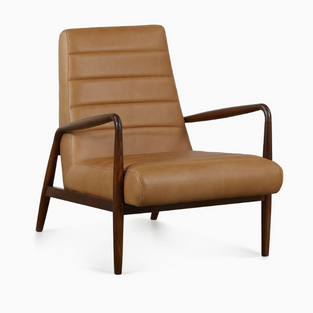
Robert Mallet-Steven occupies a curious place in the history of architecture. Although his cubic, white plaster forms are clearly modernist, he also employed decorative elements which could be considered Art Deco. While many today might consider the automobile inspired aesthetic of Art Deco related to modernism or at least a pre-cursor, it was not in the nineteen fifties and sixties. In fact, Art Deco was seen as hopelessly old fashioned, and the term was used to exclude architects and designers from their rightful place in the history of modernism. Sadly Robert Mallet-Stevens did not survive WW II, so we will never know how his work might have evolved.

RMS was born into a family of wealth and privilege in 1886 in Paris, growing up in the Maison Lafitte, a hotel particulier designed by the architect Mansart in the eighteenth century. His aunt Suzanne Stevens was married to Baron Stoclet, the owner of the the Palais Stoclet in Brussels designed by Josef Hoffman. In 1909, he graduated from the Special School of Architecture in Paris. He volunteered for a the French air force In 1914, where he served as an aviator and reconnaissance photographer until 1918.

The Villa Noailles, completed in1928, is perhaps Mallet-Steven’s most famous work. It was designed as summer home for famous socialites and art- patrons Charles and Marie-Laure Noailles, who were at the epicenter of the French Surrealist movement. Man Ray's film masterpiece “Les Mystères du Château du Dé " was filmed here in 1929. Unlike his contemporaries who wanted to design every rug and piece of furniture, Robert Mallet-Stevens liked to collaborate with other designers. He assembled a dream team of every brilliant modernist designer you can think of for the villa. Eileen Gray, Jean-Michel Frank, Pierre Chareau, Charlotte Perriand, Jean Prouve and others all had furnishings in the home. During WW II, the villa was occupied by the Italian army and turned into a hospital. It remained in the Noailles family until the death of Marie-Laure in 1970. The city of Hyeres (where the villa is located) purchased the villa in 1973 and it is now an art center that is open to the public.

Rue Mallet-Stevens In 1927, he developed the former rue D’Autueil in the 16th arondissement into a gleaming block of modernist villas and apartments for his wealthy clientele. Mostly modernist, with some art deco flourishes Rue Mallet Steven, as the street is now called, is a gorgeous example of white plaster modernity with industrial steel windows. The street is immaculately maintained and the buildings look just as modern today as they did in the twenties.


In addition to his architectural projects, Mallet-Stevens designed sets and furniture for movies throughout the twenties, working almost exclusively with the director Marcel L’ Herbier, publishing a book about set design called“ Modern Cinema Décor”. The influence of his set design can be seen in the way he manipulates natural light to create incredibly dramatic interiors, almost as if envisioning his interiors as movies sets and his clients as the stars.

The 20,000 SF Villa Cavrois designed for Belgian industrialist Paul Cavrois in 1932, was Mallet-Stevens last large commission. This unusual building was constructed out of yellow brick, rather than the typical white plaster preferred by most modernists. But the massing and forms of the building are still elegant and streamlined. Mallet-Stevens echoes the rhythm of the brick exterior, in the wood paneling, marble, and light fixtures throughout the interior. A truly modern house, it contains an elevator, central heating, intercom and built-in speakers. His experience as a set designer is evident in the dramatic natural lighting which highlights the massive volumes of the rooms. The family fled France just before WWII and the villa was occupied by the Nazis. It was remodeled in the 1950’s but by the 1990’s it had fallen into extreme disrepair and was about to be demolished by a developer. Thanks in part to the efforts by architects Renzo Piano and Norman Foster, the villa was saved and purchased by the French government in 2001. Twenty Five million dollars later the villa has been refurbished and is open to the public.

From 1935-40 as European economies tanked and his wealthy clients fled the country,
Mallet-Stevens taught at the Ecole de Beaux Arts in Lille. In 1940 he and his wife (who was Jewish) fled to the free zone of southwestern France, where they struggled to make ends meet during the occupation. He died while undergoing surgery in 1945.

At his death in 1945, Robert Mallet-Stevens requested that his entire archive be destroyed. Unfortunately his wishes were followed, and as a result this talented and very much in-demand architect all but disappeared from the history of modern architecture. In 1961 his wife Andree Bernheim-Stevens, donated whatever documents remained to the Musee des Arts Decoratifs, but his reputation had fallen significantly by this point. His work was dismissed by critics and architects at the time, as the work of a “dandy”. He had never published a manifesto, he had never done any large scale projects, he had designed film sets, all marks against him by the architecture establishment. By the nineteen eighties, however his work began to be re-appraised and appreciated once again. In 2005 the Pompidou Center held a retrospective of his work, firmly re-instating him in the ranks of important modernist architects.
Thirsty for More? Check out the recipe for the Aviation cocktail here

Sources: Robert Mallet-Stevens: Architectue, Furniture, Interior Design, edited by Jean Francois Pinchon
MIT Press, 1990
Want some Robert Mallet-Stevens chez vous?













Comentarios